“He is not here. See the place where they laid him.”
(Mark 16:6)
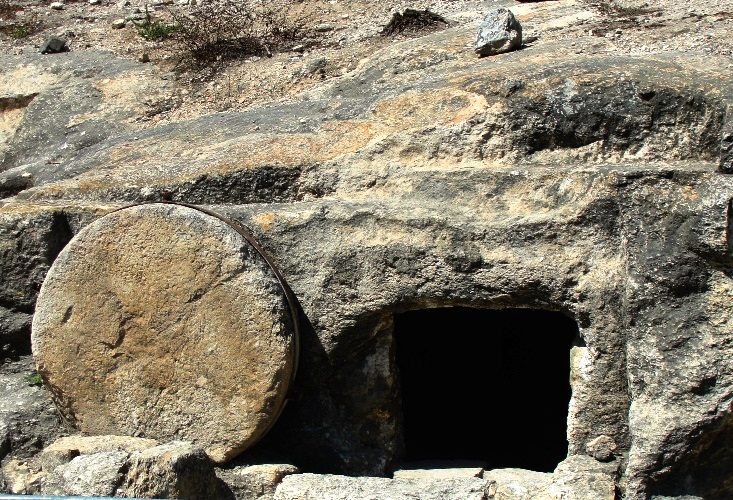
Prologue
Going by biblical narrative, Jesus was crucified, along with two criminals, on the orders of Pontius Pilate, the then administrator of Roman occupied Judea. Jesus died at about three o’clock in the afternoon. Since the next day was Sabbath, the divinely commanded rest day for the Jews, the Jews approached the Roman authorities and pleaded that their holy day should not be profaned by the spectacle of dead bodies hanging on the cross. Orders were given to hasten the death of all three and to remove them from the cross. The soldiers broke the legs of the two criminals. When they came to Jesus, they found him already dead. A soldier, possibly to make sure, pierced His side with a spear, and “there came out blood and water” (John 19:34). We are unsure whether this means, as some scholars have contended, that Jesus literally died of a rupture of the heart.
In spite of his small success at Jerusalem, Jesus had gained the secret sympathy of some influential individuals. One of these persons was Joseph, from the small town of Arimathea (Ha-ramathaim). This affluent and influential man went to Pilate in the evening to ask for the body of Jesus. Pilate agreed. Nicodemus, another such friend, joined Joseph of Arimathea. Nicodemus had brought as much as 100 pounds of spices – “a mixture of myrrh and aloes” (John 19:39), with which to enwrap the body of Jesus. Everything was done in a great haste to beat the deadline of the Sabbath. The body of Jesus was placed in a new tomb in a “garden,” near the site of crucifixion (John 19:41, 42).
Joseph and Nicodemus interred Jesus according to the Jewish custom. The door of the burial chamber cut in a rock was shut by a heavy stone. The wailing and tearful Galilean women had apparently witnessed the burial. It was perhaps a temporary burial to be supplemented by an anointing when the Sabbath was past. The women retired after carefully noting the spot where the body was laid. They went home and prepared the items for the embalming of the body of Jesus after the Sabbath. They all rested that Saturday (Sabbath) while waiting expectantly for Sunday to dawn.
Early on Sunday morning, the Galilean women went to the tomb to give an adequate burial to their Master. Prominent among these women was Mary Magdalene. She discovered that the stone was not in its place on the mouth of the burial chamber. She looked inside the vault and found it empty. The idea of the resurrection was not in the mind of Mary at that point in time. She was unsure of what had become of the body. She was only thinking of the likelihood of the body of Jesus being stolen. It horrified her.
Mary Magdalene ran to the house in which Peter and John were together. “They have taken away the body of our Master,” said she, “and I know not where they have laid him”, (John 20:13). The two disciples got up and ran towards the tomb. John, the younger, arrived first. He stooped down to look inside and realized that Mary was right. The tomb was empty. We are not sure whether the two disciples had then pronounced the decisive words: “He is risen!” But, it was certain that such a conclusion was inevitable. The words, “He is risen!” established the founding dogma of the Christian faith. But that announcement came not from the Apostles. It came from a woman – Mary Magdalene. Subsequently, this was called “the vision of Peter.” Of course, Peter had to be the man. He was the closest to the Master and the leader of all disciples. How could someone else, that too a woman, be given credit for such an epoch making event?
Did Jesus really resurrect?
Most Christians believe that Jesus died on the cross at Calvary and he was buried in a tomb in the garden. On the third day, he returned to life in a miraculous manner. Today (April 21, 2019), Christians across the world are celebrating Easter, that commemorates the resurrection of Jesus. But the resurrection of Jesus is not accepted as a historical fact by skeptics disinclined to accept miracles. If the biblical account of resurrection is true, there must then be other explanations for the empty tomb and the vision of a risen Christ. So, scholars have proposed several theories to explain the phenomenon of resurrection. Let us briefly review some of the best-known theories.
1. The Stolen Body Theory: Some early opponents of Christianity claimed that the followers of Jesus had secretly taken away his body from the tomb and then invented the whole story of the resurrection. This accusation might have even prompted the Romans to enact a new law known as the Edict of Caesar, which is engraved on a marble slab found in Galilee. This edict prescribes death penalty for anyone convicted of unlawfully removing a corpse from its tomb.
The Stolen Body Theory is one of the oldest and best-known resurrection theories. But who had a motive to steal his body? The Romans and the Jews would have done everything under their power to ensure that the body stayed in the sepulchre. The Gospel accounts suggest that the disciples had already been resigned to the fact that Jesus was dead and buried bringing the curtains down on the passing phenomena of Jesus of Nazareth in the role of Messiah. Incidentally, Christians were under severe persecution for their faith in the first century. Had the apostles or others had any involvement or knowledge of anyone stealing the body of Jesus from the tomb, it was highly unlikely that they would have stood firm on their faith to suffer martyrdom.
It is possible that someone else stole the body behind the back of the followers of Jesus. The needle of suspicion might point in the direction of the men who had received the body and entombed it. In the face of the overwhelming euphoria over the resurrection, they chose to keep quiet and join the celebrations.
2. The Swoon Theory: The basic assertion of the ‘Swoon Theory’ is that Jesus was not dead when he was removed from the cross. In fact, many people have been mistakenly pronounced dead even by modern physicians. In some cases breathing becomes so shallow and heartbeat so faint that both are very difficult to detect. If modern day medical professionals could be fooled, it is quite plausible for the Roman soldier to have erred. Proponents of the Swoon Theory often argue that Jesus was actually buried alive. He came out of his swoon after a while and left the tomb. Some versions of the story say that Jesus came to India and spent the rest of his life in India or in Tibet.
Some people have suggested that even if he were not dead already, the spear thrust must have finished him off. But, some scholars think that the story of the spear thrust is a fabrication, purposely invented by the author of the Gospel of John, in a belated attempt to refute the idea that Jesus was not dead. The other three gospels, written before John, say nothing at all about a spear thrust.
However, even if Jesus had survived his tortures, crucifixion and the final piercing of his side by the Roman soldier’s spear, it looks impossible that he had broken free of the 100 pounds of spices in which his body was encased and rolled away a heavy stone that had blocked the mouth of the cave. It might be argued that Jesus possessed certain special spiritual powers, which could have enabled him perform such things. But, once we admit that Jesus was endowed with special powers, we might also have to admit his resurrection.
3. Drugged-Body Theory: This is similar to the Swoon Theory, except that the apparent death on the cross was induced by a drug. Such a possibility does have a scientific basis, because experiments have shown that a plant-derived drug called Reserpine can put mice into a temporary death-like state for several days. This, or some similar drug, might very well have the same effect on a human being. A detailed account of this theory was given by British biblical scholar Hugh J. Schonfield in his book ‘The Passover Plot’.
The author argues that a death-simulation drug was given to Jesus as part of a plot to allow him to survive the crucifixion. Schonfield claims that John’s Gospel suggests that Jesus had planned everything, including the timing of crucifixion, which ensured that Jesus would not be on the cross for more than a few hours before the Sabbath started. It was also fixed that one of his supporters would give him a drink that was actually laced with a drug to make him unconscious. Joseph of Arimathea, a well-connected supporter, was to collect him off the cross while still alive (but appearing dead) so that he could be secretly nursed back to health.
4. The Twin Theory: There are two main versions of this theory, both based on the idea that Jesus had a twin brother. In one version, the twin dies on the cross instead of Jesus, and in the other version the twin appears as an impostor after Jesus dies. Proponents of these ideas claim to find supporting evidence in certain names which can be translated as “twin”. But the theory is obviously too far-fetched, and it has few supporters. Also, this theory does not account for the missing body from the tomb. If Jesus had indeed a twin brother, who had died in his place on the cross, the other brother had to steal the body from the tomb. There are other variations on the idea that a mistake in identity caused someone else to be crucified instead of Jesus.
5. The Vision Theory: The basic idea of this theory is that the earliest belief in the resurrection was based on illusory visions of a ghostlike apparition of Jesus. In ancient times, many people believed that divine beings sometimes used visions as a method of communication. A person who had such a vision knew that it was a vision, but thought that a divine being had created it. Thus, the belief in the resurrection could have originated when some followers of Jesus imagined that he was using visions to communicate with them. Then later, as the message was carried to people in other communities, stories about visions could have gradually evolved into stories of a real physical resurrection.
Some scholars think that Mary Magdalene might have been the first believer in the resurrection. It is an interesting fact that she plays the biggest role in the stories of the empty tomb and the first post-resurrection appearances of Jesus. The Gospel of Luke says that seven demons had been expelled from her, and this could indicate that she was a highly emotional person. Perhaps her attachment to Jesus was so strong that she could not accept the reality of his death, and she took this vision as proof that he was still alive. Some form of the Vision Theory could be the most plausible alternative explanation for what had happened.
6. The Spiritual Resurrection Theory: Some modern Christians, and even a few theologians, believe in a spiritual (rather than bodily) resurrection of Jesus. According to this view, the human body of Jesus was removed by God and he reappeared in his eternal spiritual form. Some scholars think that this was also the original belief of the earliest Christians, and that the idea of a bodily resurrection did not appear until later. Possible evidence for this can be found in some of the earliest writings, including the letters of Paul and the Gospel of Thomas – a gospel not accepted for inclusion in the New Testament by the Church. The belief that Jesus returned in a spiritual form is also consistent with the various gospel stories in which he suddenly appears and disappears, or passes through walls, and with the stories in which his followers do not initially recognize him, or are told not to touch him.
7. The Qur’an theory: This theory is based upon what is recorded in the scripture of Islam (The Holy Qur’an). It claims that “they did not kill him nor did they crucify him, but so it was made to appear to him…Rather, Allah raised him up toward Himself, and Allah is all-mighty, all-wise” (Sura 4:157–158). The main concern with the reliability of this source is that it was written about six hundred years later (between CE 609 and 632). It is probably best not to start with a seventh century source like the Qur’an for incidents that had taken place in the first century.
Epilogue
There are tombs from the time of Jesus still left in Jerusalem. In 1968, such a tomb was discovered by a team of workers laying foundations for some new construction in Giv’at Ha’mivtar, a suburb of north Jerusalem. One morning they stumbled upon something unusual. The experts were called in. They confirmed it to be an ancient tomb. The archaeologists looking inside the tomb discovered an ossuary (a stone box for human bones) containing bones from the time of Jesus. (It was the custom in those times for the bones of the dead to be removed from their tomb after six to twenty-four months. The collected bones were placed in an ossuary to make the tomb available for other corpses.) In this particular ossuary, the archaeologists found one special bone. This bone had a rusty nail still lodged in it. After further investigation, they established that these were the remains of a crucified man called Jehohannan. It was the first and only victim of crucifixion ever discovered in Israel. However, the records reveal that the Romans had crucified thousands of Jewish rebels. So the discovery of the bones of Jehohannan made experts to believe that they would find more such stone boxes with bones of crucified people. Yet, after nearly four more decades of digging and combing through every ossuary, the bones of no other victim of crucifixion could be discovered. Why?
The implications of this lack of evidence were unsettling. One of the central tenets of Christian history was under threat. The logic was clear. Why did the bones of crucified rebels not ended up in ossuaries? Perhaps, the original victims were not being placed in tombs in the first place. And if that were true, was it possible that the body of Jesus was never placed in a tomb? Perhaps his tomb was found to be empty by his followers simply because it was never occupied at all. If that is the case, where did the bodies of Jewish rebels like Jesus end up? In order to find an answer to this question, archaeologists began to hunt in the unlikeliest locations.
Just south of the city of Jerusalem is one such place. Today it is a park, but from the evidence of chiselling all over the rock face, it is clear to archaeologists that this was once a quarry. At the time of Jesus, quarries had served more than one purpose. Its primary use was to cut stone for construction works. The quarries were also used by the Romans for public executions. Historians now believe that Jesus would have been crucified in just such a quarry. But places like this served other purposes too. The remains of some tombs hewn from the rock suggest that people were not just killed there; they were also buried there. Was this what happened in the case of Jesus too? Was his body placed in a simple quarry tomb close to the place where he was crucified?
Since the first century, quarries were also used as city rubbish dumps. That made the job of disposing of dead bodies easier for the Roman executioners. The most convenient solution would have been to take the bodies down and throw them on the garbage dump. Wild dogs and birds of prey would further deal with those bodies. Perhaps, that explains the absence of even a single bone of a crucified rebel in all those ossuaries. According to this theory, the body of Jesus never made it to a tomb. It was thrown on a rubbish heap and devoured by dogs and birds. This theory held some sway in the 1990s, but then came the evidence against it. The case begins with the nails themselves.
Jerusalem is a huge city with thousands of tombs still waiting to be excavated. Perhaps that is one reason why only one victim of crucifixion has been found to date. The tombs most likely to have survived were the well-built, well-situated tombs of the wealthy. It is most unlikely that those tombs had been used to bury victims of crucifixion. Nevertheless, there could be numerous tombs of crucifixion victims remaining undiscovered. But even if all such tombs are found, the odds on finding another bone with a nail through it are very remote. For one thing, most rebels were not nailed to their crosses, but only tied to them. But, even in the cases of people nailed to the cross as happened in the case of Jesus, the nails are unlikely to be discovered. For one thing, the nails used for crucifixion were regarded as the most powerful charms in the ancient world. People prized them very highly, believing that they had healing properties. For another, the nails were often reused by the Romans. So, immediately after crucified victims were taken down from their crosses, the soldiers pulled out the nails from their bodies and pocketed.
Now, if the above theory is valid, why was the bone of Jehohannan discovered with a nail still stuck in it? The answer lies in that particular nail. It had a bent tip. When Jehohannan was nailed to his cross, this nail must have hit a knot in the wood and bent, fixing it to the bone for good. The soldiers must have found it difficult to pull it out. So the discovery of this bone does not mean that the body of Jesus did not receive a proper burial.
In fact, there are strong grounds for thinking, that like any other Jew, Jesus too would have been given a proper burial. Under Jewish law, even the most despised criminal had to have a proper burial in order to save the land from being defiled. All the evidence suggests that the Romans would have desisted from violating local religious customs. So, it is perfectly plausible that the body of Jesus was placed in a tomb after his death, and that the women came to it on the third day, just as the gospels describe. But the gospel writers claim much more than that. They suggest that the tomb was empty because Jesus had risen from the dead. How can that claim be examined? Did the eyewitnesses or the reporters make the story up? Whom can we believe?
A physical resurrection was unnecessary for the visionary mode of seeing the risen Christ. But the general movement of subsequent New Testament literature was towards the physical nature of the resurrection. This development is linked to the changing make-up of the Christian community. The earliest followers of Christ were Jews, whose faith emphasised the life of the soul. But in an overwhelmingly Greco-Roman church, the Gospel writers stressed the pagan belief in the hero, who is immortalised and deified in his physical body. In this Hellenistic resurrection paradigm, Jesus dies, is buried, and his body disappears leaving an empty tomb. He then returns in an immortalised physical body, able to appear and disappear at will like a god.
Did Jesus actually resurrect? Was his body taken away? Did devotion and enthusiasm rather than reality create the narratives that sought to establish faith in the resurrection? We do not know for sure. But there are many theories that have been advanced to explain resurrection. Nevertheless, it remains a fact that the strong imagination of Mary Magdalene played an important part in the resurrection process. Love indeed has divine power!
——————————–
Post Script:
As I finish writing this post, the news channels are reporting multiple blasts in Sri Lanka targeting Churches and hotels. The faithful had assembled in the Churches to participate in the worship service connected with Easter. Over 160 people died and hundreds injured. The death toll is likely to climb further. The strike is probably in retaliation to the massacre of some sixty people in a Mosque in New Zealand a few weeks ago. The Bible says that those taking the sword shall perish by the sword. Unfortunately, the people who perish in such violence are mostly those seeking to live peacefully on the earth in this life than eternal bliss in a paradise in the afterlife. My Heartfelt Condolences to the families of the victims.







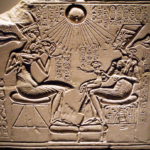
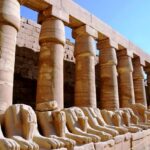
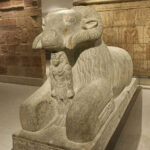
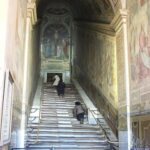
I saw a Whatsapp message by you about the shepherd’s rod of bishops. The emblem there is
The caduceus is the traditional symbol of Hermes and features two snakes winding around an often winged staff. It is often used as a symbol of medicine instead of the Rod of Asclepius, especially in the United States. Wikipedia
Here you say crucified criminals did not have tombs, may be. May be that is why Joseph and Nicodemus took special permission.
I am not a blind believer who take symbols for reality. But I do believe that the faith in Jesus Christ would not have spread so much not survived this long unless there was atleast some truth in it.
I not a fool who believes that God manifested only through Jesus Christ. I believe that every religion has a part of God’s revelation in it clouded over by human interpretation and bias.
Thank you
Dear Susan,
Let me first clarify that the WhatsApp message you mention was not mine. I do not have WhatsApp on my phone. This is not to say that I have not written about the crosier in the social media. In any case, thanks for the clarifications.
You write “But I do believe that the faith in Jesus Christ would not have spread so much not survived this long unless there was at least some truth in it”.
It is not my desire to question the truth of Christianity. I have only been examining certain historical aspects of the faith. And Christianity did not necessarily become a world religion on the strength of its own merits. The Roman emperors starting with Constantine had backed it. Edict of Thessalonica (380) made Nicene Christianity the official religion of the Empire. Considering that Roman Empire those days covered more or less all the known world, there is nothing surprising about the spread of Christianity. We should also remember that millions of innocent people were massacred in the name of heresy.
Thanks for your comment..
Then what about the JESUS TOMB in Kashmer India. There is an Islamic Mosque with burial tomb where the Local People believe Prophet Issa travelled from Palestine for fear of Jews and lived and died there. Looks like The Europeans twisted the whole story for their convenience
Dear Kuruvilla,
There are stories that say that Jesus did not die on the cross and had come back to India. According to this story, Jesus had died in Kashmir and his body was buried in a tomb there. A 2010 BBC report on this says, “Officially, the tomb is the burial site of Youza Asaph, a medieval Muslim preacher – but a growing number of people believe that it is in fact the tomb of Jesus of Nazareth… It’s a story spread by local shopkeepers, just because some crazy professor said it was Jesus’ tomb. They thought it would be good for business. Tourists would come, after all these years of violence… And then it got into the Lonely Planet, and too many people started coming. And one foreigner broke off a bit from the tomb to take home with him. So that’s why it’s closed now.”
Regret the delay in responding.
thanks.